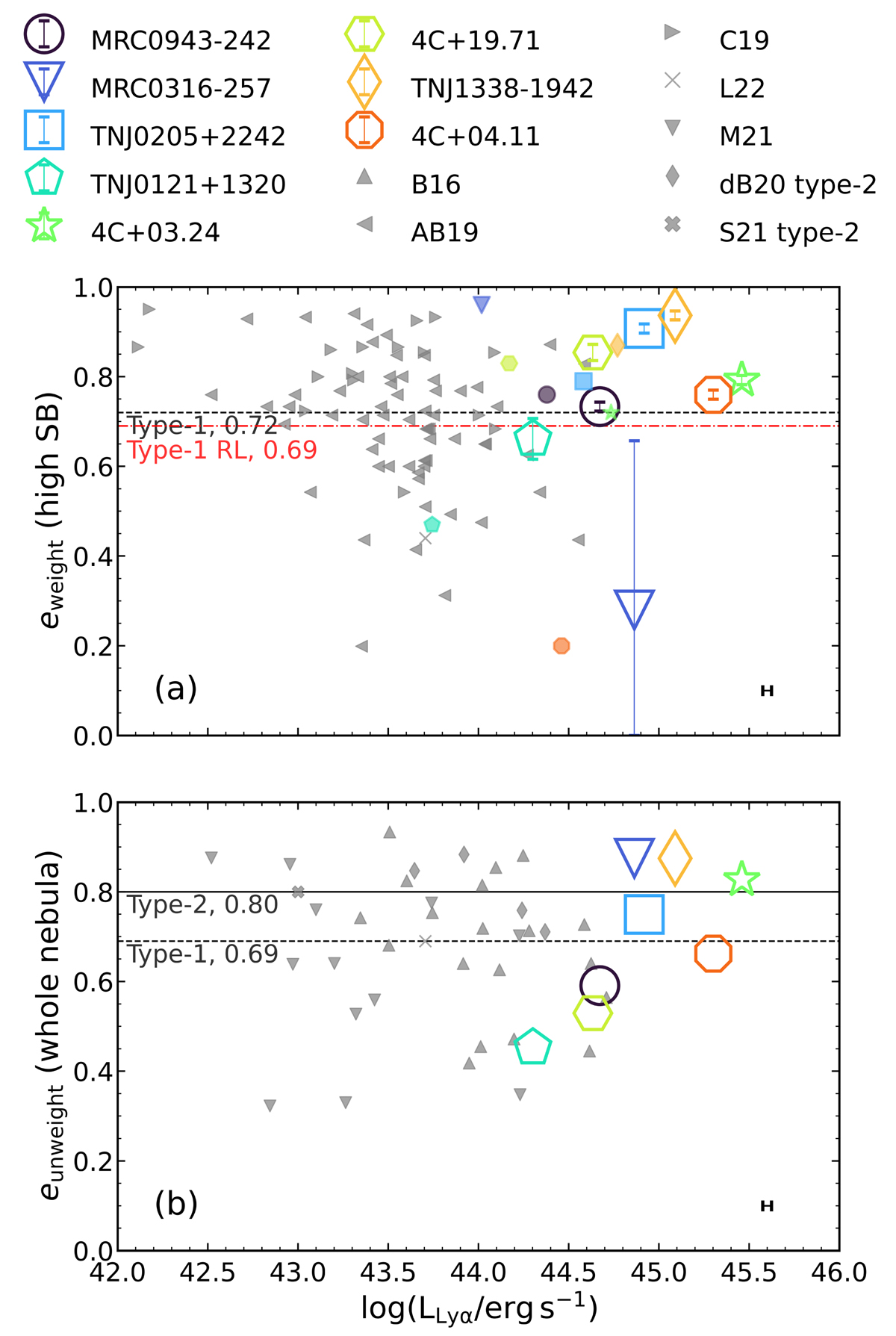Fig. 9.

Download original image
Relation between Lyα nebula luminosity and asymmetry measurement. (a) Flux-weighted Lyα nebula elliptical asymmetry measurement versus nebula luminosity, LLyα. We show the intrinsic flux-weighted ellipticity (eweight) in larger open symbols for our targets versus their intrinsic Lyα luminosity. We also show the observed flux-weighted ellipticity eweight, obs for our targets versus their observed Lyα luminosity in smaller filler symbols. The small grey symbols are data of comparison targets (AB19 – Arrigoni Battaia et al. 2019, C19 – Cai et al. 2019 and L22 – Lau et al. 2022). We mark the median flux-weighted (not corrected for absorption) ellipticity, 0.72, of type-1s with the horizontal dashed line. We also show the median eweight, 0.69, of radio-loud type-1 quasars from Arrigoni Battaia et al. (2019) in red horizontal dash-dotted line. (b) Flux-unweighted Lyα nebula elliptical asymmetry measurement versus LLyα. The larger symbol are measurements for our HzRGs while the grey symbols are comparison targets (type-1s: B16 – Borisova et al. 2016, L22 – Lau et al. 2022 and M21 – Mackenzie et al. 2021; type-2s: dB20 – den Brok et al. 2020 and S21 – Sanderson et al. 2021). We mark the median eunweight for type-1s (0.69) and type-2s (0.80) in solid and dashed horizontal lines, separately. The eweight is sensitive to the morphology of the high surface brightness part of the nebula while the eunweight quantifies the morphology of the whole nebula. We note that for e → 0, the nebula is closer to round shape and vice versa. At the bottom right, we show the median uncertainty of the intrinsic LLyα for our sample in logarithmic scale, 0.04. The ellipticity for our sample are higher compared to the other quasars for both high surface brightness part and whole nebula. There is no clear evidence that the nebula ellipticity correlates with luminosity.
Current usage metrics show cumulative count of Article Views (full-text article views including HTML views, PDF and ePub downloads, according to the available data) and Abstracts Views on Vision4Press platform.
Data correspond to usage on the plateform after 2015. The current usage metrics is available 48-96 hours after online publication and is updated daily on week days.
Initial download of the metrics may take a while.


